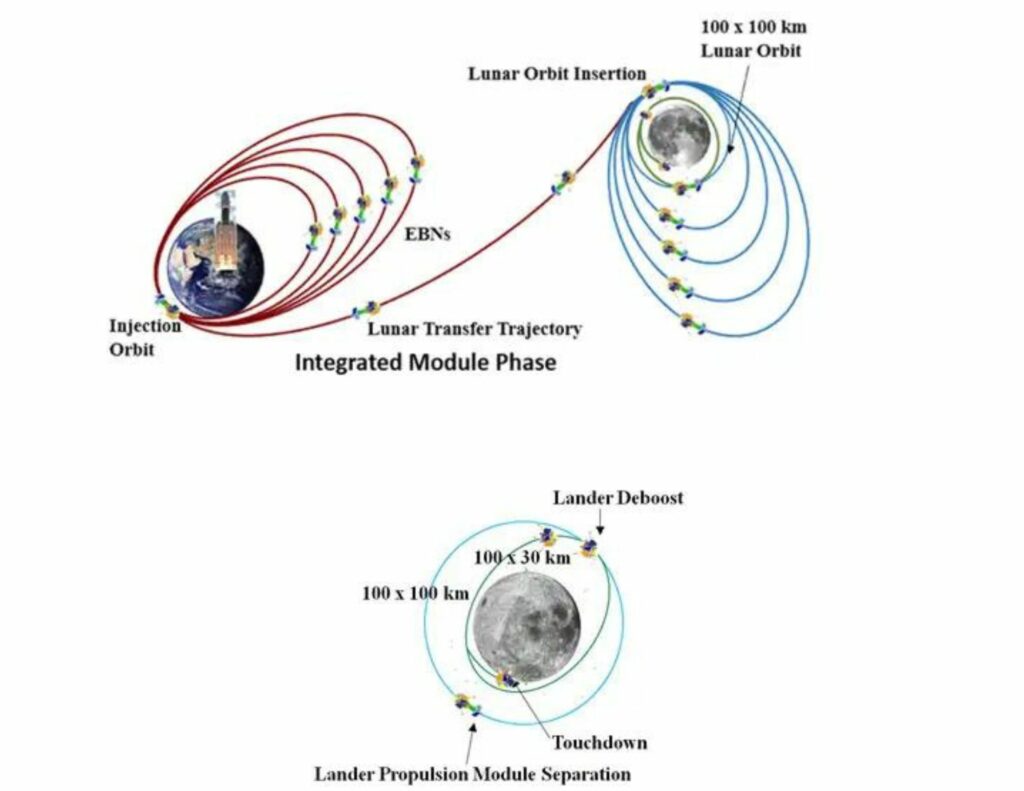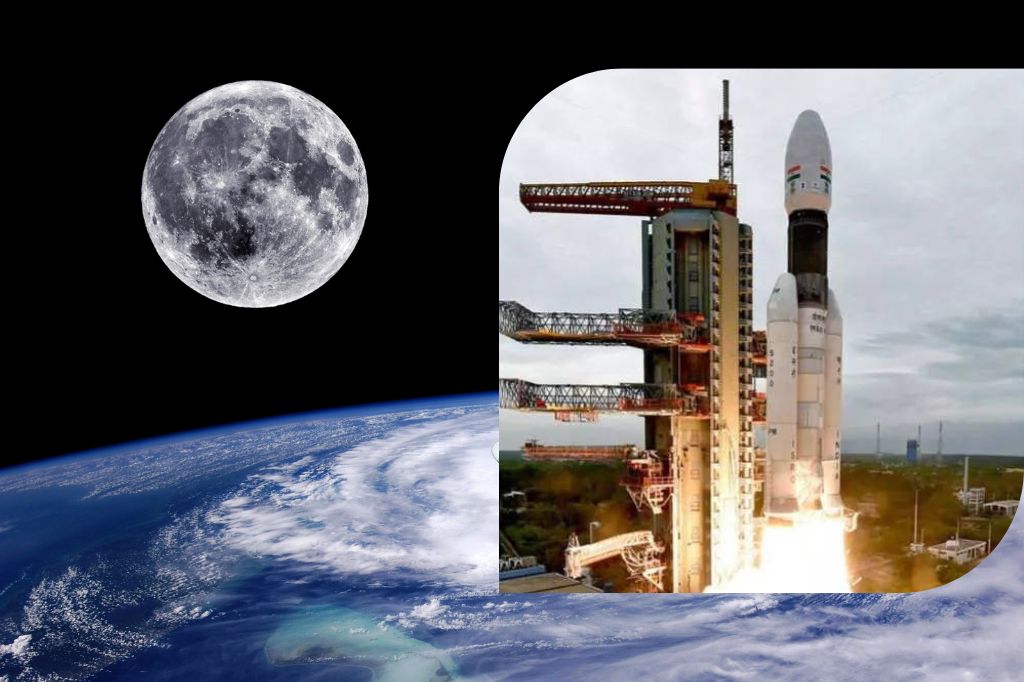As the world readies itself for the launch of the much-awaited Chandrayaan-3, it’s the perfect opportunity to appreciate the evolution of India’s lunar exploration ventures and the remarkable progress they represent. The Indian Space Research Organisation (ISRO), the nation’s leading space agency, stands on the precipice of launching Chandrayaan-3, a mission built on the wisdom gained and victories achieved in Chandrayaan-1 and Chandrayaan-2.
Genesis of the Journey: Chandrayaan-1
India’s inaugural venture into lunar exploration began with Chandrayaan-1, launched in October 2008. This pioneering mission had a budget of approximately $83 million (386 crores INR), underlining ISRO’s ability to carry out cost-effective space missions.
The cornerstone of Chandrayaan-1 was its orbiter, which was tasked with meticulously mapping the moon’s surface and performing comprehensive mineralogical analysis. One of its noteworthy payloads was the Moon Mineralogy Mapper (M3), a NASA instrument designed to create a mineral-resource map of the lunar surface.
The Chandrayaan-1’s mission life was planned for two years. However, after efficiently functioning for almost 312 days, the spacecraft’s communication with the ground station was lost in August 2009. Despite the early end to the mission, it had already achieved 95% of its planned objectives.

Among Chandrayaan-1’s groundbreaking findings was the discovery of water ice on the moon’s surface. It detected evidence for water molecules in the lunar polar regions. This landmark discovery challenged the long-held belief that our celestial neighbor was a barren and waterless world.
The discovery was so significant that it earned mention in the ‘Top 10 Scientific Discoveries of the Year 2009‘. Moreover, it triggered a renewed interest in lunar exploration across the world. Chandrayaan-1’s success story was not confined to scientific discoveries. It also showcased India’s prowess in space technology on a global platform. It catapulted India into an elite club of nations—joining the likes of the United States, Russia, China, Japan, and the members of the European Space Agency—that had sent missions to the moon.
The Second Leap: Chandrayaan-2
Following the trailblazing success of Chandrayaan-1, the Indian Space Research Organisation (ISRO) initiated Chandrayaan-2, a second lunar mission that aimed to explore the uncharted southern polar region of the moon. With a budget of approximately $142 million (978 crores INR), the mission was launched in July 2019, marking a significant escalation in terms of complexity and objectives from its predecessor.

Chandrayaan-2 was an ambitious endeavor as it involved not just an orbiter like its predecessor but also a lander (Vikram) and a rover (Pragyaan). The orbiter carried eight scientific payloads for mapping the lunar surface and studying the exosphere (outer atmosphere) of the moon.
The Vikram lander, named in honor of Dr. Vikram Sarabhai, the father of the Indian space program, housed four scientific payloads and was devised to function for one lunar day (approximately 14 Earth days). The rover, Pragyaan, had two payloads aimed at understanding the lunar surface’s composition.
Despite meticulous planning and execution, Chandrayaan-2 did not fully achieve its ultimate goal—a soft landing on the moon’s surface. The lander lost contact with the mission control room when it was just 2.1 kilometers above the lunar surface. This was a disappointment but not a total failure.

Despite the setback, Chandrayaan-2’s orbiter, designed for a mission life of one year, continues to function efficiently, now exceeding two years. It has captured high-resolution images of the moon and continues to contribute valuable data about lunar topography and the moon’s exosphere. It has a spectral capability from the visible to the microwave region, enabling a comprehensive understanding of the moon’s geology.
The orbiter’s observations have led to key findings, including the discovery of the presence of Argon-40, a noble gas, from the lunar exosphere. Additionally, it has identified and mapped lunar craters, such as the Anorthositic crater, which provided insights into the moon’s volcanic activity and origin.
#ISRO
The CHACE-2 payload aboard the #Chandrayaan2 orbiter has detected Argon-40 from an altitude of approximately 100 km.
For more details please see https://t.co/oY9rPZ9o1w
Here's the schematic of the origin and dynamics of Argon-40 in lunar exosphere pic.twitter.com/xrFDblq2Mt
— ISRO (@isro) October 31, 2019Chandrayaan-2 has amplified our understanding of the moon and has paved the way for future explorations. It has demonstrated India’s growing prowess in space technology and its unwavering commitment to expanding the frontiers of knowledge.

Ready for the Next Challenge: Chandrayaan-3

ISRO is now all set to embark on its next lunar expedition, Chandrayaan-3. Scheduled for a launch on July 14, 2023 at 2:35 pm SDSC, Sriharikota. With a renewed commitment to lunar exploration, Chandrayaan-3 is designed with two primary components: a lander and a rover, and it plans to leverage the still-functional orbiter from Chandrayaan-2 for communication and terrain mapping purposes.
Announcing the launch of Chandrayaan-3:
🚀LVM3-M4/Chandrayaan-3 🛰️Mission:
The launch is now scheduled for
📆July 14, 2023, at 2:35 pm IST
from SDSC, Sriharikota
Stay tuned for the updates!
— ISRO (@isro) July 6, 2023Evolved and Enhanced: The Uniqueness of Chandrayaan-3
In the wake of Chandrayaan-2’s partial success, ISRO has turned its sights to the next audacious goal – Chandrayaan-3. Learning from the past experiences and fine-tuning its ambitions, ISRO aims to achieve a soft landing on the Moon, a feat accomplished by only three countries so far – the United States, the former Soviet Union, and China. Budgeted at around $89 million (615 crores INR), Chandrayaan-3 represents a unique fusion of perseverance and pioneering spirit that characterizes India’s lunar exploration journey.

Unlike the preceding missions, Chandrayaan-3 will focus exclusively on a lander-rover module, while utilizing the still functional and fuel-rich orbiter from Chandrayaan-2 for communication with the lander-rover and Earth. This strategic decision not only reduces the mission’s cost but also allows ISRO to concentrate its efforts on achieving the elusive soft landing.
One of the major lessons from Chandrayaan-2’s lander failure was the necessity of safe and precise navigation during the lander’s descent. To rectify this, Chandrayaan-3 introduces the Lander Hazard Detection & Avoidance Camera. This instrument will identify potential dangers on the lunar surface and adjust the lander’s trajectory, ensuring a safer descent.
To further increase the landing precision, ISRO has redesigned the landing leg of the Chandrayaan-3 lander. This change, coupled with an improved speed-measuring instrument, is expected to provide a more stable and controlled landing, overcoming the hurdles experienced in the Chandrayaan-2 mission.
Also read: Meta Threads vs Twitter: A Media Expert’s Perspective on the Battle for Social Media Dominance
The Chandrayaan-3 mission also includes a suite of scientific instruments, such as ChaSTE and ILSA, intended to study the Moon’s thermal conductivity and seismic activity, respectively. The LP instrument will assess the plasma density, and a Laser Retroreflector Array will aid in lunar laser ranging studies. These scientific payloads signify ISRO’s ongoing commitment to furthering lunar sciences through its missions.
The inclusion of the SHAPE instrument to study Earth’s spectrum for potentially habitable planets is another noteworthy feature of Chandrayaan-3. This represents ISRO’s expanding focus, moving beyond lunar exploration to the broader realm of space sciences.
Charting the Course of Lunar Discovery: Chandrayaan-3

Chandrayaan-3 is a manifestation of ISRO’s ambition not only to join the exclusive club of nations that have achieved a soft lunar landing but also to further humanity’s understanding of Earth’s closest celestial neighbor and beyond. It stands as a testament to ISRO’s innovative spirit and resolve to push the frontiers of space exploration, undeterred by the challenges that come its way.
As Chandrayaan-3 inches closer to its launch date, the eyes of the world are fixed on India’s bold lunar exploration mission. Regardless of the outcome, the mission underscores ISRO’s resilient spirit and unwavering commitment to pushing the frontiers of space exploration, reinforcing its place among the world’s leading space agencies.












